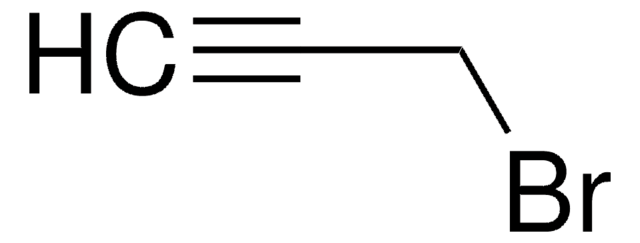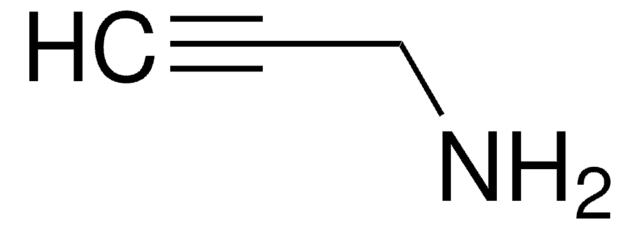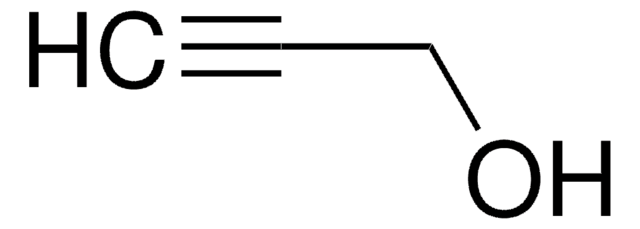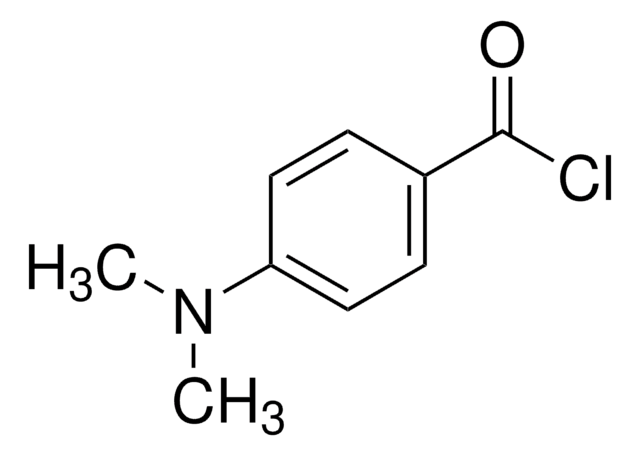推荐产品
品質等級
濃度
80 wt. % in xylene
折射率
n20/D 1.494
bp
97 °C
密度
1.34 g/mL at 25 °C
官能基
alkyl halide
bromo
儲存溫度
2-8°C
SMILES 字串
BrCC#C
InChI
1S/C3H3Br/c1-2-3-4/h1H,3H2
InChI 密鑰
YORCIIVHUBAYBQ-UHFFFAOYSA-N
正在寻找类似产品? 访问 产品对比指南
一般說明
The product is an 80wt.% solution of propargyl bromide (3-bromo-1-propyne) in xylene.
應用
Propargyl bromide solution (80wt.% solution in xylene) may be used in the preparation of dimethyl 5-hydroxyisophthalate propargyl ether.
訊號詞
Danger
危險分類
Acute Tox. 3 Oral - Asp. Tox. 1 - Eye Dam. 1 - Flam. Liq. 2 - Skin Corr. 1B - STOT RE 2 Inhalation - STOT SE 3
標靶器官
Central nervous system,Liver,Kidney, Respiratory system
儲存類別代碼
3 - Flammable liquids
水污染物質分類(WGK)
WGK 2
閃點(°F)
45.0 °F - closed cup
閃點(°C)
7.22 °C - closed cup
個人防護裝備
Eyeshields, Faceshields, Gloves, type ABEK (EN14387) respirator filter
其他客户在看
Self-assembly of amphiphilic polymeric dendrimers synthesized with selective degradable linkages.
Urbani CN, et al.
Macromolecules, 41(1), 76-86 (2008)
Francesco Alessandrini et al.
International immunopharmacology, 29(1), 105-109 (2015-06-03)
The involvement of muscarinic receptors in cancer has been reported. Recently we have demonstrated that the activation of M2 muscarinic receptors, through arecaidine propargyl ester, arrests cell proliferation and induces apoptosis in primary and established glioblastoma cell lines. Considering the
Maria Di Bari et al.
Neurochemistry international, 90, 261-270 (2015-10-13)
Glioblastomas are the most common brain tumors in humans. Previously, we demonstrated that the muscarinic receptor agonist, arecaidine propargyl ester, via M2 receptors, inhibits cell proliferation in a time and dose-dependent manner and induces a severe apoptosis in human U251
Jong Hwan Kwak et al.
Biomaterials, 61, 52-60 (2015-05-23)
We studied the blood-brain barrier (BBB) permeability and intracellular localization of a fluorescein isothiocyanate (FITC)-labeled dieckol (1) and a rhodamine B-labeled dieckol (7), for exploring the possible therapeutic application of fluorone-labeled dieckols in neurodegenerative diseases. Both compounds (1 &7) were
Abdelaziz Al Ouahabi et al.
Journal of the American Chemical Society, 137(16), 5629-5635 (2015-04-09)
Sequence-defined non-natural polyphosphates were prepared using iterative phosphoramidite protocols on a polystyrene solid support. Three monomers were used in this work: 2-cyanoethyl (3-dimethoxytrityloxy-propyl) diisopropylphosphoramidite (0), 2-cyanoethyl (3-dimethoxytrityloxy-2,2-dimethyl-propyl) diisopropylphosphoramidite (1), and 2-cyanoethyl (3-dimethoxytrityloxy-2,2-dipropargyl-propyl) diisopropylphosphoramidite (1'). Phosphoramidite coupling steps allowed rapid synthesis
我们的科学家团队拥有各种研究领域经验,包括生命科学、材料科学、化学合成、色谱、分析及许多其他领域.
联系客户支持














